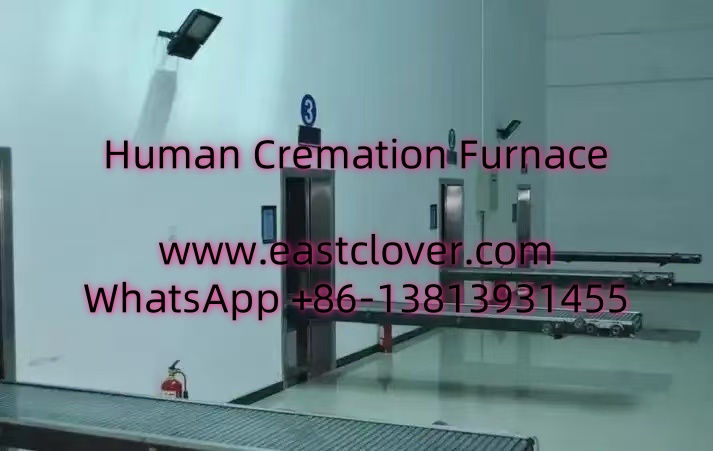Emergency Mobile Human Cremation Furnaces in Nigeria
In recent years, Nigeria has faced escalating challenges related to mass fatalities caused by epidemics, natural disasters, and violent conflicts. From the Boko Haram insurgency to outbreaks of Lassa fever, cholera, and COVID-19, the country’s existing infrastructure for managing large-scale casualties has often been overwhelmed. Traditional burial practices, which are deeply rooted in cultural and religious traditions, can become impractical during crises, leading to public health risks and logistical bottlenecks. In response, emergency mobile human cremation furnaces have emerged as a potential solution to address these challenges. But can portable cremation technology truly bridge the gap in Nigeria’s crisis management capabilities?
The Challenge of Mass Fatalities in Nigeria
Nigeria’s population of over 200 million people faces recurrent threats that strain its capacity to manage fatalities. During epidemics like the 2014 Ebola outbreak or the 2023 cholera crisis, traditional burial practices—such as washing and communal gatherings—accelerated disease transmission. In conflict zones like northeastern Nigeria, where Boko Haram has displaced millions, mass graves have been used to manage casualties. However, these improvised solutions risk contaminating water sources, creating long-term environmental hazards, and violating the dignity of the deceased.
In urban areas, overcrowded mortuaries and limited cold storage facilities compound the problem. For instance, during the COVID-19 pandemic, morgues in Lagos and Abuja reached capacity, forcing authorities to store bodies in refrigerated trucks. Such measures are temporary, costly, and inadequate for prolonged crises.
Mobile Cremation: A Technological Intervention
Mobile cremation furnaces are compact, portable units designed to cremate human remains efficiently in disaster-stricken or remote areas. Unlike traditional crematoriums, which require fixed infrastructure, these systems can be transported via trucks or trailers and operationalized within hours. Key features include:
- Rapid Deployment: Units can be dispatched to crisis zones, reducing the time between death and disposition.
- Sanitation: High-temperature incineration (800–1000°C) eliminates pathogens, minimizing public health risks.
- Fuel Efficiency: Many models use propane, diesel, or electricity, optimized for low resource consumption.
- Scalability: Multiple units can operate simultaneously to manage surges in fatalities.
Countries like India and Japan have used mobile cremation during natural disasters, but Nigeria’s cultural and religious landscape presents unique challenges to adoption.
Cultural, Ethical, and Logistical Considerations
Over 50% of Nigeria’s population practices Islam, which mandates burial within 24 hours of death, while Christian communities often prioritize intact burials. Cremation is viewed with skepticism, as many associate it with indignity or non-compliance with religious tenets. Advocates argue, however, that mobile cremation could serve as a stopgap measure in emergencies, complementing—not replacing—traditional practices.
Logistically, the cost of procuring and maintaining these units raises questions. A single mobile furnace can cost between $50,000 and $200,000, excluding fuel and labor. Training personnel to operate the technology in high-stress environments adds another layer of complexity. Furthermore, environmental advocates highlight emissions concerns, though modern filters mitigate particulate matter and greenhouse gases.
Case Study: Lessons from the 2023 Cholera Outbreak
During the 2023 cholera outbreak in northern Nigeria, which claimed over 2,000 lives, mobile cremation units were piloted in Borno State. Authorities reported a 40% reduction in secondary infections compared to regions relying on mass burials. However, community resistance persisted, with some families refusing to release bodies for cremation. This underscores the need for public sensitization campaigns and collaboration with religious leaders to build trust.
www.southclover.com
Mobile cremation furnaces offer a pragmatic, albeit controversial, tool for managing mass fatalities in Nigeria. While their technical benefits are clear—speed, sanitation, and scalability—success hinges on addressing cultural reservations and ensuring affordability. A hybrid approach, integrating portable cremation for high-risk scenarios while respecting traditional burial rites where feasible, may provide a balanced path forward. Ultimately, sustainable solutions will require investment in public health infrastructure, community dialogue, and crisis preparedness frameworks.
FAQs
What is a mobile cremation furnace?
A portable unit designed to cremate human remains on-site during emergencies, reducing reliance on fixed infrastructure.
Is cremation culturally acceptable in Nigeria?
Generally, no. Most communities prefer burial. However, emergency use may be permissible if framed as a public health necessity.
How much does a mobile furnace cost?
Prices range from $50,000 to $200,000, depending on capacity and technology.
Can cremation emissions harm the environment?
Modern units include filters to reduce pollutants, though fuel consumption remains a concern.
What role can the government play?
Policymakers must fund units, train personnel, and collaborate with communities to ensure ethical deployment.

Comments are closed